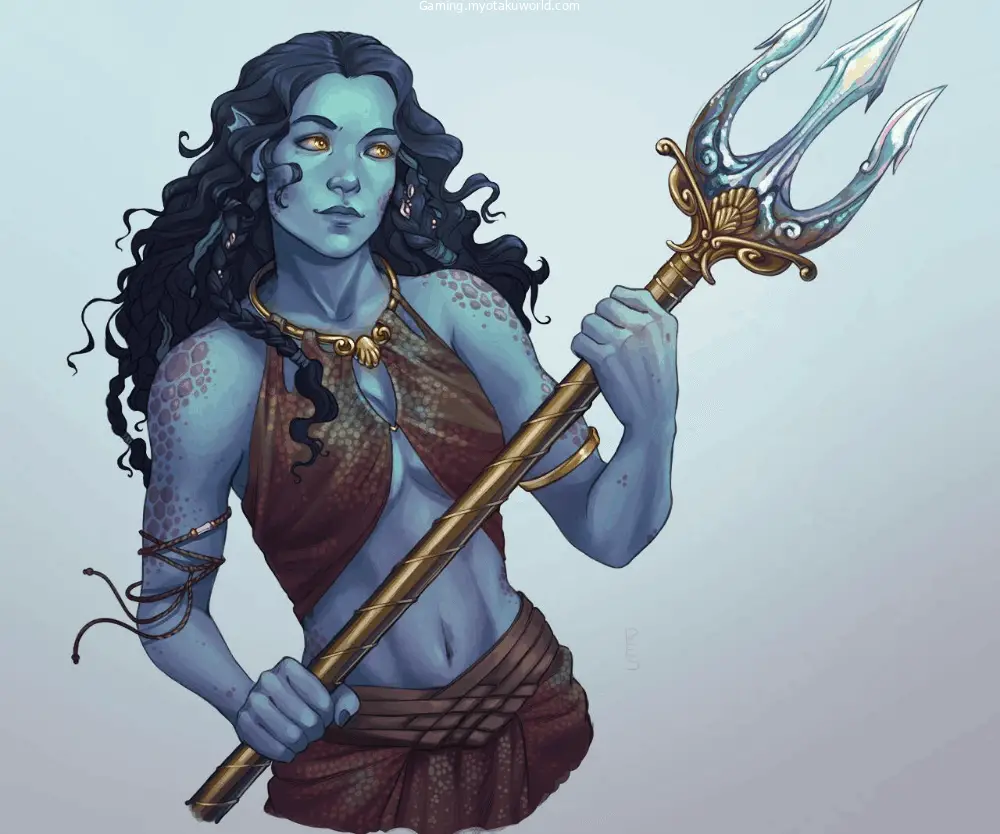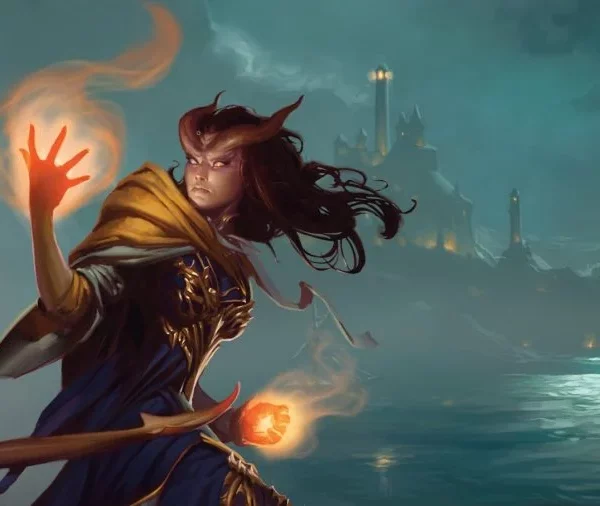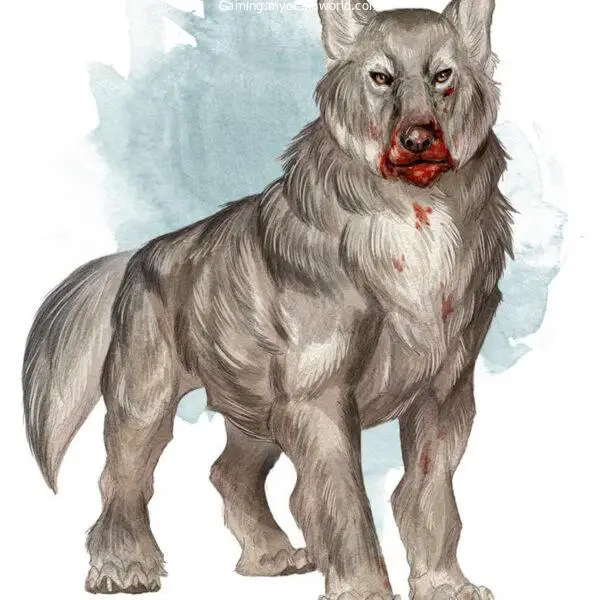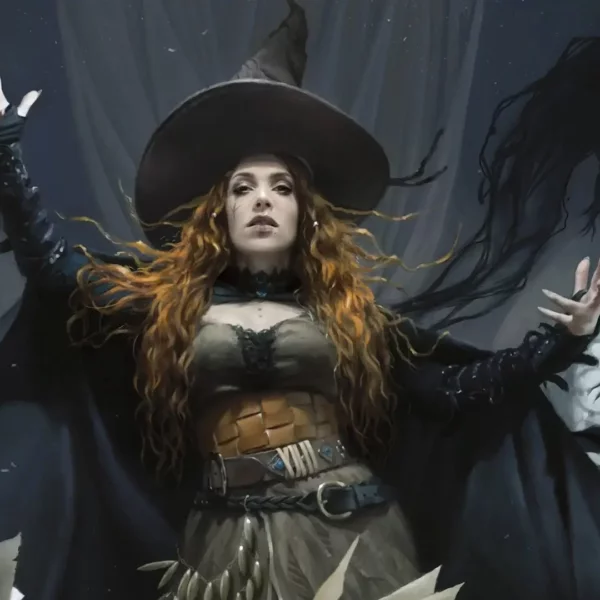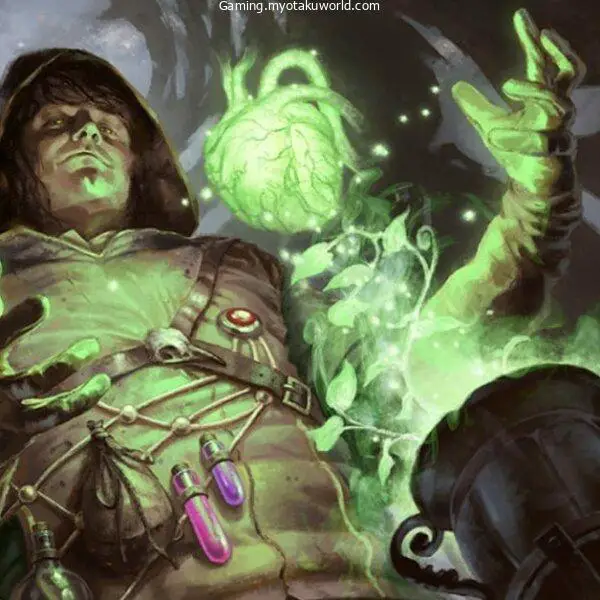Tritons, the Defenders of The Seas, Sahuagins’ enemies, and Krakens killers, are exciting races to play in D&D 5.
They are aquatic beings and can be found in deep ocean depths, sea caves, or protecting the Plane of Water. Tritons can walk on the ground, but they are not able to control land matters.
A Triton is a unique member of any D&D party. They are known for being arrogant but also generous and curious.
They are highly situational in their abilities, so they might not be as useful if you are far from the sea. However, they are a fun and unique race to play as.
If you want to be one of these ocean-dwelling defenses this guide will cover all you need to know about Tritons.
What is a Triton?
A Triton, an aquatic humanoid, is a playable race in Volo’s Guide to Monsters. These are loosely inspired by the Greek god Triton (a merman, and son of Poseidon) – but Tritons in D&D differ from merfolk.
Ah, the Tritons. Imagine the Tritons living a few centuries below the sea. Their arrogance and pride would be evident.
Pretension can grow unabated. The tritons did not spend that much time fighting sahuagin or worse so you know they can be trusted in a fight.Brego Stoneheart is a sea captain.
( Volo’s Guide to Monsters)
Tritons lived once in the Elemental Plane of Water. This oceanic realm is home to many water-dwelling creatures, good and bad.
Tritons are used to fight sea monsters like Sahuagins and Krakens within the Plane Of Water. These enemies managed to escape into the Material Plane, where players can adventure.
The Tritons fled their homeland to defend the waters and the Material Plane from their old enemies.
Tritons live in deep-sea tunnels, oceans, sea caves, and other watery environments that require their protection.
Although they trade with the surface world, they have very little contact with the outside world. Tritons, despite this isolation, are a race that few people have ever seen.
What do Tritons Look Like?

Tritons, aquatic humanoids, are 5ft tall. Tritons have pointed ears, webbed feet and hands, and a dorsal fin at each calves.
Tritons are known for their dark blue skin. They can have pearly white skin, sea green, or coral pink skin.
Their hair is usually long and flows down to the shoulders. Sometimes, Tritons decorate their hair with shells or coral.
What abilities do Tritons have?
Ability score increases: Tritons receive +1 to their Strength and Constitution as well as their Charisma.
Tritons are fast! Tritons can walk at 30 feet per hour and swim at 30 feet per hour.
What is the average life expectancy of Tritons?
Tritons can live up to 200 years.
What is the size of Tritons?
Tritons are medium-sized animals, usually standing at around 5ft.
Are Tritons able to breathe underwater?
Yes! Tritons can breathe underwater and on land, and are amphibious.
What are the spells that Tritons can cast?
Tritons have the ability to summon the elemental magic of Air or Water using Charisma as their spell modifier. These spells are available to Tritons:
- 1st level: fog
- Third level: gusts of wind
- 5th Level: wall water
Emissary to the Sea: Tritons have an affinity with the ocean, which means that they can communicate basic information to any animal that can breathe underwater. These creatures, however, cannot understand them.
Guardians of the Depths: Tritons are immune to cold damage and can ignore any negative effects of an underwater environment.
Tritons Personalities
Tritons are notorious for their arrogance and insistence on respect wherever they go.
They have not spent much time on the ground, so they are often far removed from the culture and customs of the land. Tritons don’t care about politics, wars, or normalities on the surface.
Volo’s guide to monsters has the following quirks tables. Roll a d6 to choose from one or more of the following quirks:
- Requests should be interpreted as orders you expect to receive.
- You boast often about the achievements of your civilization.
- You have learned an obsolete version of Common. Now you can drop the “thee” or “thou” in your speech.
- It is natural to assume that others will tell you the truth about local customs or expectations.
- You can catalog all the details of the surface world in a journal.
- It is a mistake to assume that people on the surface know and are impressed with your people’s past.
Tritons’ arrogance and isolation are part of what makes them so much fun to roleplay. You should consider their unique characteristics if you plan to play a Triton in D&D 5e.
Tritons, despite their self-importance, are loyal and good companions. They are often Lawful Good and will do anything to protect their friends and the oceans where they call home.
They are proud of their achievements and even arrogant, which makes them willing to sacrifice everything for the causes they believe in.
Tritons are a great race to fight alongside, even if they may be conflicted with other party members.
Triton Religions
Tritons worship Persana the creator-god and protector of Tritons, who are often unknown to other beings.
Persana is often depicted as a huge Triton carrying a large shell, or silver triton. When they lived in Persana, the Tritons were a theocratic community.
This meant that they were ruled over by Persana’s priestesses and priests.
Most Tritons still worship Persana even though they have left the Plane of water. Sahuagins, Tritons’ ancient enemy, are also enemies of Sekolah, the Sahuagin shark god.
How to create a Triton character?
1. Select a class for your Triton
Which class is best for Tritons? A Paladin is the best Triton race due to their Strength, Constitution, and Charisma bonuses.
This can be combined with your Triton’s history as a Persana worshipping sea defender. Triton Paladins might consider taking the Oath to the Open Sea once they reach 3rd-level.
Tritons are good Fighters and Bards as well as Warlocks and Sorcerers.
2. Select a background for your Triton
You should think about the reason your Triton came to the surface if you’re playing one in D&D 5e.
Is Persana sending him a message instructing him to visit the surface?
Are they both Bards who are fascinated by the surface and want to know more about the world beyond the ocean’s depths?
These are some good background options for Tritons from the Player’s Handbook include
- Acolyte: You are a dedicated worshipper of Persana and have spent your entire life serving as an intermediary between you god and the other Tritons.
- Hermit – You are a hermit who has spent your entire life in deep-sea trenches, taking care of the animals and plants there. You are not familiar with the outside world.
- Noble – You are a strong member of your Triton clan, and you are used to exercising authority over others.
- Sailor – Your underwater home was abandoned many years ago. You became a sailor and prefer the company of other Tritons to you.
3. Select a name for your Triton

Triton names typically have two or more letters. Names of males end in a vowel, followed by the s letter. Female names end with an n.
Triton surnames often use the name of their home (ocean or sea cave). This is followed by the Triton surname. These are some suggested names
Female Triton Names: Aryn, Belthyn, Duthyn, Feloren, Otanyn, Shalryn, Vlaryn, Wolyn
Male Triton Names: Corus, Delnis, Jhimas, Keros, Molos, Nalos, Vodos, Zunis
Triton Surnames: Ahlorsath, Pumanath, Vuuvaxath
FAQs
Which Languages Can Tritons Speak?
Tritons are able to speak, read and write in Common or Primordial.
Which Weapons Can Tritons Use?
Tritons excel with melee weapons due to their Strength bonus. A special weapon for Tritons is the Tapal. This one-handed arched blade can be used with a spear, dagger, or bone- or coral-colored spear.
Tritons are traditionally presented tapals when they turn 15 years old. Tapals are often family heirlooms that have a deep personal meaning to many Tritons. They are most effective underwater but can also be used at the surface.
Does D&D 5e give Tritons Darkvision?
Yes, in the 2020 adventure guide Mythic Odyss of Theros it was clarified, that Tritons have darkvision.
Are Tritons equipped with scales?
Official rulebooks don’t give an accurate description of Triton appearance. It is up to you and the Dungeon Master. You can have a Triton that is scaley if you wish!
What’s the difference between Merfolk and Tritons?
Tritons are humanoid with legs. Merfolk, on the other hand, have a lower body that is more fish-like. Merfolk also live in deeper areas of the ocean than Tritons. Merfolk does not go so deep into the ocean because they lack darkvision. Therefore, it is unlikely that Merfolk will ever have much to share with Tritons.
Are Tritons fun race to play in D&D5e?
A lot of Triton’s abilities can be very situational in terms of your power. You may feel less powerful than other races if you aren’t participating in a campaign that allows you to speak to aquatic animals and water-breathing. Tritons can be a lot of fun and they can make a difference when used properly.
Our advice: Talk to your Dungeon Master to get an idea of the campaign you will be running.
Final Words
Tritons are an unusual and fun class. Your Triton will be the most bizarre member of your party if you are playing a standard campaign.
This can lead to some very entertaining roleplaying, especially when your Triton is extremely haughty and completely clueless about the world.
Volo’s Guide to Monsters will give you all the information you need about Tritons and tips for playing them.
Mythic Odysseys of Theros is a great campaign for Dungeon Masters who want to include Tritons in their game. It’s a sea-faring campaign that suits Triton PCs well.
